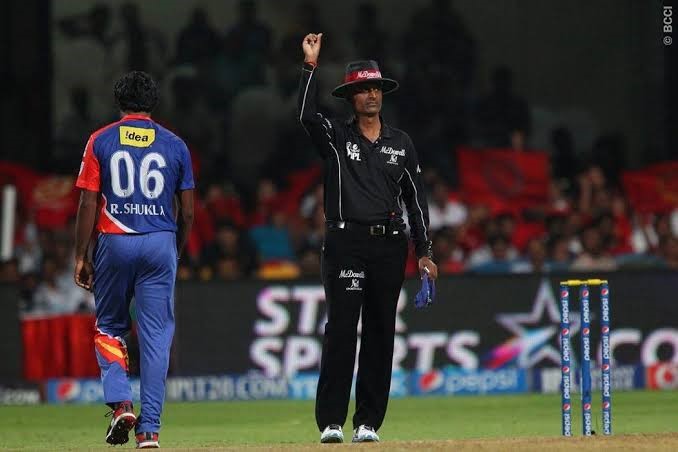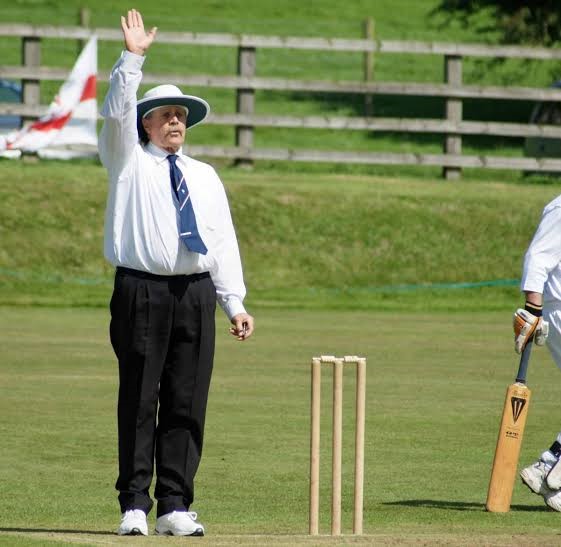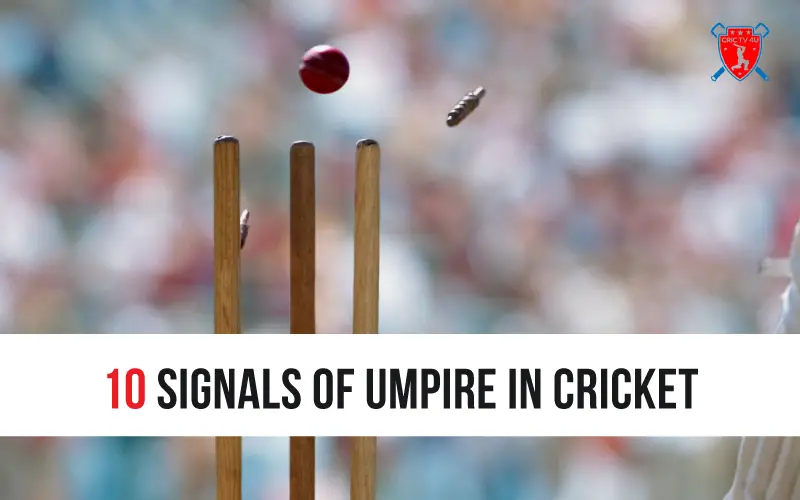Every sport should be played with all the following up of rules and regulations that can enhance the public to participate in the sports; traditionally cricket also has policies wherein referees play an essential part throughout the match. As cricket matches consist of two umpires within the initial position on the field, i.e. one on the standing area at the end of the ground wherein the bowler delivers the ball, and another place is directly opposite to the facing of the batsman. These two positions ensure that there is no partial or bias decision within the game that makes modern cricket more reliable.
1. Out
The umpires usually show the index finger and raised towards the upward direction, which is visible to the batsman as well as other people in the stadium, the condition that signifies the action is whether the person is beyond the crease, if the catch of bowling has been caught, whenever there is run out, stumping, bowled, or run out. The umpire usually signals the batsman for walking away from the field as they have left the crease for a more extended period and have to mandatorily lonely walk towards the pavilion.

2. No-Ball
Whenever the umpires perform the action, which is right arm outstretched, which signifies or indicates that the bowler's foot landed over or beyond the front line which is also termed as crease. Yet the delivery can be deemed for the results as a no-ball. The usual causation of the no-balls is foot fault or towards the ball passing above the aatsman waist without bouncing off the ball as every jurisdiction of the umpire within the bowler's end. Usually, ICC has chooses the ratified law as the result, there was a controversy concerning the legality within the action of particular bowlers.

3. Free Hit
In some of the certain form for the limited set of over in cricket likewise T20s and the ODIs series if there is a no-ball which resulted in the bowler of overstepping the crease or towards bowling above the batsmen waist which will be penalized by the next delivery which will result in a free hit. The symbol is that the umpire rotates the hand by heading the index finger in the circular form; moreover, the finger is horizontally over the head of the referee; usually, it follows a no-ball. The characteristics which can be encompassed as free hit wherein the batsman cannot be dismissed upon the action like catches caught, bowled upon the bowler, leg before the wickets, and stumping.

4. Wide
This particular signal is indicated by stretching both the arm wide; this sign is performed whenever the ball is out the broad reach of the batsman, which has been outsourced as adjudged upon the comprehensive action. One run usually goes onto within the Team’s batting that can even score an extra run, and yet the ball must be re-bowled as it is weightage as a call for no-ball. If the delivery was satisfied on the essential criteria for both the no-ball and towards a wide bowling, the tough call, and penalties of performing the no-ball for taking the precedence.

5. Dead Ball
If the ball which is accomplished is no longer taken into consideration within the playing of the match if it is a dead ball as an umpire has signified which can be questioned overcrossing or uncrossing the wrists and continuing the below their wait that can be with the dead ball. If the requirement should be taken under a particular set of laws that also may be necessary for the players, a similar kind of signal can be used for indicating 'not out' for reviewing the decision.

6. Four
The indication of the signal can be put as stretching the hand horizontal and wave to and for (waving the hand back to the level of the shoulder and then fourth in the exact front position of the chest). Moreover, the signal also varies from umpire to umpire as many signify with short wave, restrained upon the action, waving in a high speed, and elaborate the sign for resembling the conductor towards an orchestra. If the batsman has a vigorous shout which hits the ball on the ground with a minimum of one-touch, then it is considered as four.

7. Six
If the ball is directly hit with no bounce in the bottom beyond the outer crease of the ground, then the umpire usually terms this hot as six, which is signified as raising both the hands just above the head. There are few criteria wherein if the ball is off the bating line, so the batsman can't hit a six as within the stadium, the ball should be more of force, or in the line, then it can be thrown beyond the outer crease line.

8. Bye
Like the word itself signifies 'bye' means that there is a type of extra run or count which has been scored by the batsman whenever the ball has not been hit by the batsman. As an ultimate action, it is even not touched or hit by the body of batsman then it is called as a bye. No ball and the ball that has been considered as comprehensive which passes by the striker that was without touching the bat or the body of the person that will complete the delivery, if the runs which have been scored as the byes, which can be signified as the umpire usually holds upon one of the palms open above the head of the referee.

9. Leg Bye
If the ball has been delivered by the bowler that could take the first strike by the person that the run should be scored only within the umpire get satisfied which has either attempted for the playing the ball with the bat or have at least tried for avoiding hitting the ball. It is signified by touching the knee by raising it.

10. Short Ball
It is elaborated as if one of the players from the batting team complete the run after delivering first without grounding upon the person or towards the equipment that was behind the popping the crease, then there will be a sign of short-run by the umpire by tapping in them near most shoulder with the fingers and then the short runs which not be scored. There are deliberately very few cases of fast running wherein the umpire usually disallows for all the runs as although this can be instead of having a rare occurrence.







